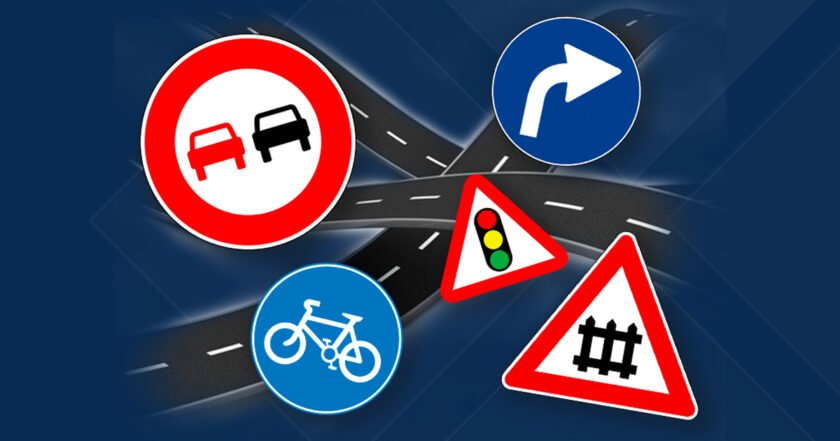Section outline
-

ROAD SAFETY AUDIT
5ТД, 6ТДз, autumn semester 2023-2024
-
Lectures and practical classes in the RSA discipline are conducted remotely in synchronous mode, according to the time specified in the schedule
-
-
The relevance of the issue of road traffic safety in Ukraine. Definition of the concept of "road safety". Appointment of road safety audit. Key points of implementation of audit in practice. Historical foundations of the formation of the concept of road safety audit in the world and in Ukraine. Assessment of the impact on the safety of the behavioral characteristics and psycho-physiological perception of the road situation by road users. The influence of a multitude of circumstances on the road and possible human errors while driving.
-
Legislative grounds for the RSA. Audit differences from traditional road safety assessment. Stages of RSA. The list of audit tasks at separate stages of the audit: at the stage of planning, preliminary design, operation, at the stage of assessing the security of the adjacent territory. The purpose and tasks of the road safety audit at each stage. Technical task and its features. Development of methodological recommendations for conducting a phased safety assessment. Formation of control sheets. Analysis of road accident methods. Road safety as a characteristic of road traffic caused by accidents. The theory of quantitative assessment of traffic safety. Determining accident rates at various stages of the RSA: 5 groups of methods.
-
Classification of highways. Technical regulations and approaches to the classification of roads intended for the movement of automobile rolling stock. Roads of state importance (international, national, regional). Roads of local significance of Ukraine (territorial, district, rural). An important parameter when planning the development of the road network is the composition of the prospective traffic flow.
Determination of prospective intensity and speed of movement. Methods of extrapolation; balance methods; model methods of traffic intensity forecasting. Iterative process of determining the speed of movement. Coefficients of reduction of traffic speed in areas adjacent to the centers of populated areas. Algorithm for calculating traffic intensity. Determination of the composition of the traffic flow. Forming the operation of motor vehicles with a division by type into passenger cars, buses and trucks. Road visibility parameters.
-
Composition of project documentation for the construction (reconstruction) of highways. Evaluation of project solutions based on indicators of speed, traffic safety and throughput. Characteristic features of expressways. Sketch design. Stages of development of pre-project documentation for construction. The main goals and objectives of the engineering project. Matching the road with the landscape. The importance of road landscaping tasks. The composition of the description of road conditions, organization and safety of road traffic. Criteria for choosing a rational option for a road.
Road quality assessment. The value of the estimated speed of movement during project development. Combined evaluation methods that allow evaluating the road both as an engineering structure and as an engineering and transport structure. Formation of the full volume of input information regarding the operational parameters of the road for a field survey.
Determination of parameters of transport flows. Determination of the intensity of traffic flows. Irregularity of traffic flows over time. The composition of the traffic flow. Type of vehicle and its characteristics. Recommendations for choosing the values of the conversion factor of any type of vehicle to a passenger car. Determination of the speed of traffic flow. Informing drivers about speed limits. Limiting speeds of cars. Assessment of the security of the estimated speed. Conditions of the road surface. The maximum speed of movement on sections with different traffic conditions.
-
Intersections and junctions of highways at different levels. Implementation of modern technology and methods of designing traffic solutions at different levels. Transitional high-speed lane. Transition curve, Clothoid, Circular curve, Straight line. The number of traffic accidents at the traffic crossing per year.
Relative accident rate at conflict points of traffic junctions. Relative accident rate at conflict points on secondary directions of incomplete traffic interchanges. Coefficient of annual unevenness of movement. The degree of danger of different types of junctions. Pedestrian traffic safety. Calculation of the distance between pedestrian crossings and determination of their location. Types and sequence of traffic light signals depending on the location of the pedestrian crossing and the type of traffic lights.
Analysis of indicators of transport operation of the road. Analysis of technical and operational indicators of road conditions. Analysis of road condition indicators and road traffic conditions. Analysis of road performance indicators.
-
Assessment of the influence of parameters of road conditions on road safety. Requirements for outdoor lighting. Level of pavement lighting. Norms of average horizontal illumination. Lighting of alleys, pedestrian and walking paths. Requirements for the maintenance of technical means of traffic management at the stage of operation. Terms of operation of technical means of traffic management. Determination of the risks of road accidents. Methods of determining the level of traffic safety on highways.
Analysis of the causes of road accidents. The main causes of accidents. Planning measures to improve traffic safety. Causes and associated factors of road accidents involving pedestrians. Audit of the use of technical means of regulation. Road conditions. Parameters of technical means. The influence of movement speed on the threshold of visual perception. Determination of the size and distance of installation of signs. Requirements for placement of technical means.
Requirements and visibility of horizontal markings in the dark. Conditions for determining the coefficient of light reflection of horizontal road markings.
Guide or signal posts. Visual perception of installed road barriers and guide devices. Dependence of the design of the road fence on the category of the road. Guard structures for installation on the dividing strip. Islands of safety. Composition and scope of audit work. Formation of the full volume of input information regarding operational parameters of the road by field survey - filling out audit sheets.